Course Menu
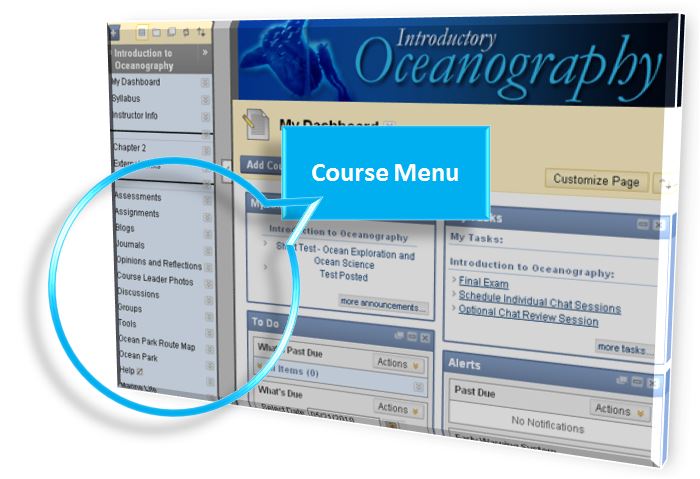
Once a course has been selected, the course menu will be displayed along the left of the page window. This menu organizes course information into one convenient location. Blackboard course menus are a student’s gateway to course-specific tools, such as assignments, groups, grades and interactive tools. These tools allow Blackboard to transform a traditional classroom environment into a functioning virtual one.
Assignments Tool
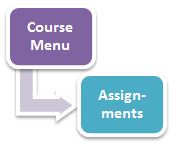
This is a student’s one-stop-shop for homework, tests, extra-credit and any other material assigned by a professor. There will be instructions listed at the top of the page as well as the due date and amount of points possible. If the assignment is timed, a student’s countdown begins once the test has been clicked. Answers can often be saved after each question or at the end of a page. Once an assignment has been opened and answered, a copy should be saved and submitted, which may involve an upload of the saved copy.
Groups Tool
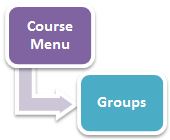
Along with assignments, instructors have the ability to create groups within a class. This tool is blackboard’s way of simulating group work. Students can be sectioned off into separate work stations to share information and complete assignments. Instead of working alone, this tool gives students the opportunity to participate in group work. Individual groups are often supplied with the same tools used by the class as a whole. Groups can have their own assignments, blogs, journals and discussion boards.
Interactive Tools
Blogs
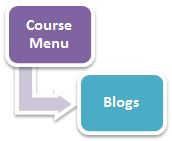
Blackboard blogs are a form of virtual conversation that takes place mostly in course groups. Blogs are a conversation tool that is more private than discussion board posts, but more public than journals. They are usually specific to a class group. Allowing only group members to post and comment within the blog. They are often used to facilitate conversation and participation among group members.
Journals
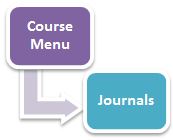
This is the most private communication vehicle blackboard has to offer. Journals are often personal conversations between a single student and the professor. However, they can also be private conversations between a class group and the professor. Journals are blackboard’s closest attempt at recreating private conversation.
Wikis
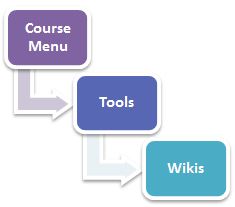
If journals are blackboards most intimate form of communication, wikis are the most public. This is the only form of blackboard communication that does not have to belong to a specific student or group. Wikis are usually open to an entire class. Any student has the ability to create a wiki page and any student within the class has the ability to edit it or add to it. Wiki pages create a space in which students can input and organize information according to context or research topic.
Discussion Board
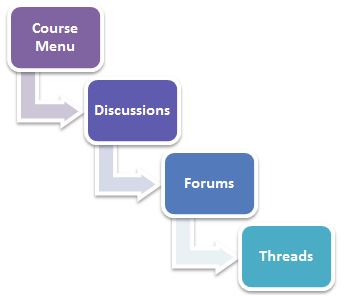
Blogs are a virtual attempt at chronological conversation. Discussion board forums are a virtual version of class discussion. The forums highlight specific topics that are important to a class’s material. Through threads and replies, an entire class can share personal opinions and information concerning pre-determined topics central to the course.
3 Essential Tips
Be Prepared
 Every instructor holds their students to certain expectations. The online classroom is no exception. Students are expected to have pre-existing experience with many of the technological features involved. These features are pivotal to a student’s success in an online environment. However, they are rarely given the class time for explanation. Virtual communication and research tools are the most important to be familiar with. Knowing how to operate a chat room, download attachments and locate quality information is essential for any online student.
Every instructor holds their students to certain expectations. The online classroom is no exception. Students are expected to have pre-existing experience with many of the technological features involved. These features are pivotal to a student’s success in an online environment. However, they are rarely given the class time for explanation. Virtual communication and research tools are the most important to be familiar with. Knowing how to operate a chat room, download attachments and locate quality information is essential for any online student.Be Present
Student success is derived from being socially present in a class. Despite the absence of a physical classroom, blackboard gives students a chance to socially recognize each other. By creating a blackboard profile, students are helping to create an online representation of themselves. This profile will attach a face to student posts. It will also let students share selected personal and class information. Student profiles are much more than a way to get to get to know classmates. They help students establish a social identity. When combined with frequent participation, recognizable faces and shared personal experiences help students stay engaged with their courses.
Be Polite
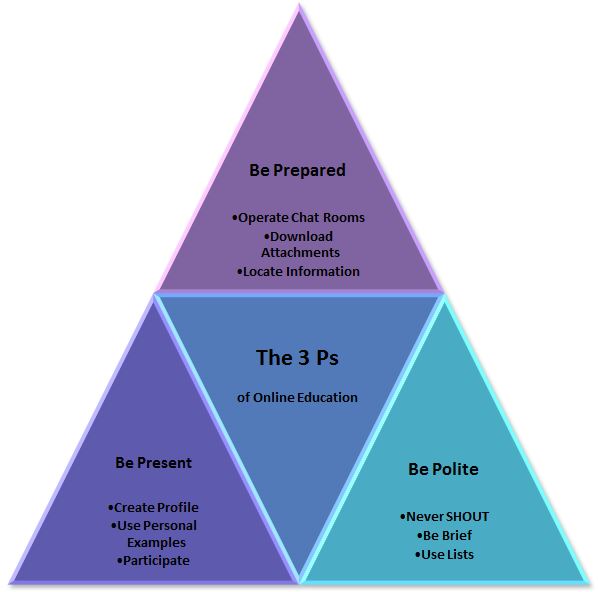
Communication is essential to any classroom setting. The absence of a traditional classroom challenges many students with a physical communication barrier. Context and social cues are difficult to follow or may appear absent from virtual conversations. Being socially present and prepared is not enough to ensure a student’s engagement and success within an online course. Students must learn to be effective online communicators. Online communication is governed by a set of rules that impose standards of internet etiquette. These rules, known as netiquette, emphasize thoughtfulness, brevity and clarity.
The most important rule of netiquette is to never be a passive communicator. Students should participate in conversations with timely responses that demonstrate some effort and reflection. Antagonizing or criticizing responses in a raised voice are never allowed in traditional settings. They are also not allowed in virtual ones. These responses are known as flaming. Students who use them are sure to isolate themselves within a class. Virtually shouting or communicating in all capital letters also hurts a student’s online presence.
Netiquette emphasizes brevity and clarity for the sake of reducing student headaches. No one likes staring at a screen for hours deciphering virtual messages. Running prose and intricate clauses were not developed for online communication. Student responses and subject lines should be kept short and concise. Arguments and ideas should be broken up as individual points. Using a blank line instead of an indentation to separate paragraphs will help students establish an easy-to-follow list format.
